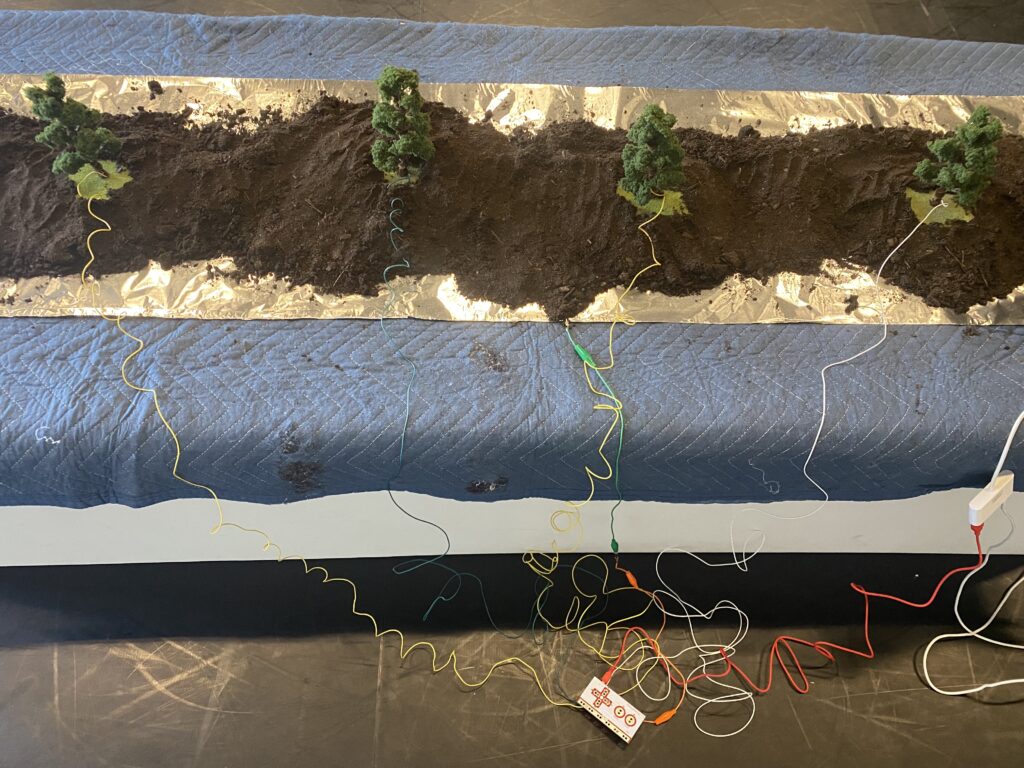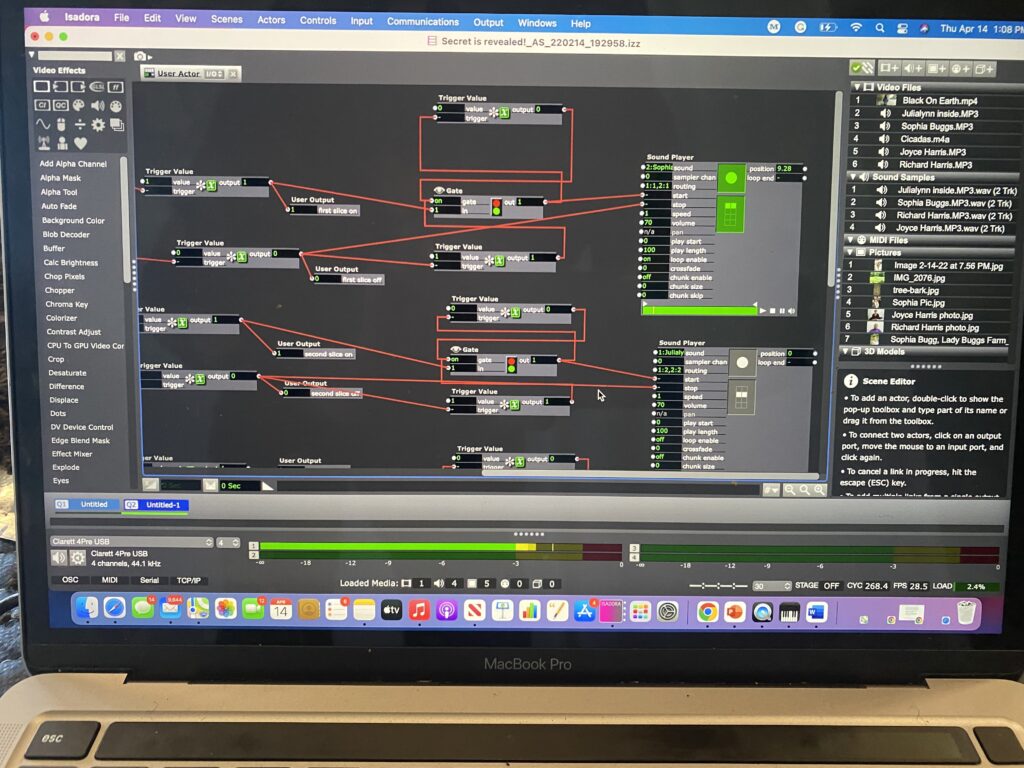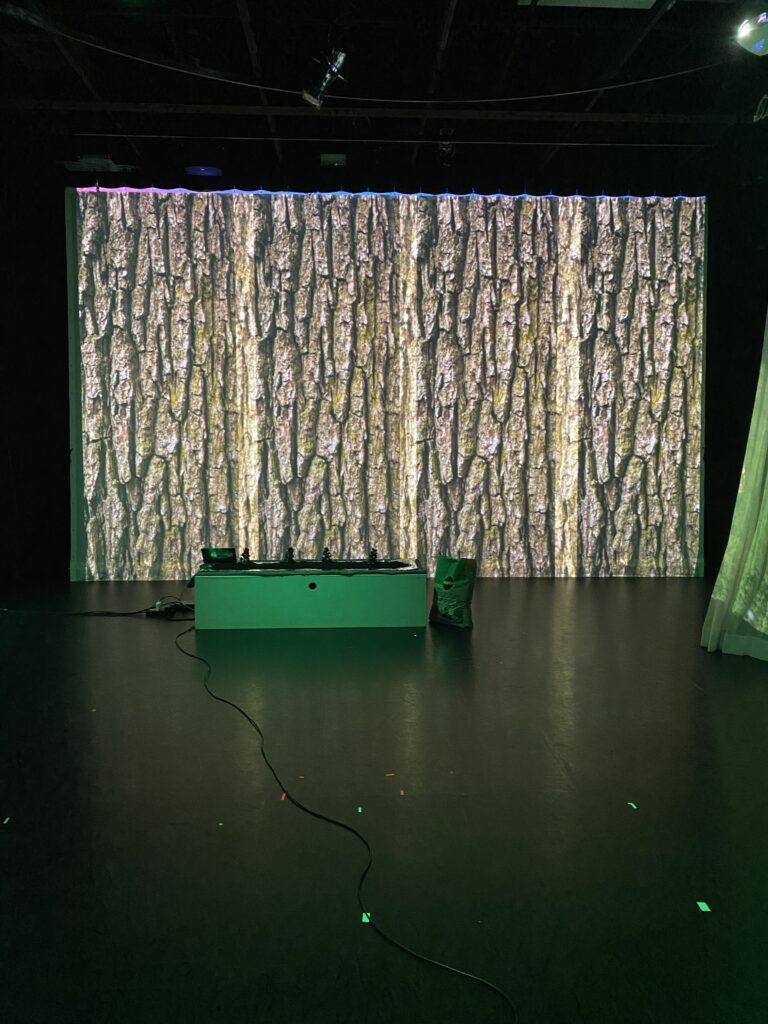Cycle 2 “If trees could talk, What would they say?”
Posted: April 21, 2022 Filed under: Uncategorized Leave a comment »In cycle two I wanted to take the experience to a larger scale. I added two more trees to the Makey Makey and worked with my classmate Patrick and instructors Oded and Alex to work on the sound aspect which I was most concerned with during this cycle. We configured the four interviews to come from four individual speakers in the motion lab by creating four channels of sound in Isadora.
Below is an image of what I imagine to be a “raised bed” and row of electric soil of connectivity.
I used aluminum foil to create a more conductive grounding for the soil.

I learned how to build a gate to trigger each of the sound players so that when participants are not connected to the tree and the soil the audio nor the image of the growers will appear.

I chose to keep the raised bed box closer to the screen so that participants could have the feeling of looking up at the trees. My goal was to honor the wisdom coming from Black growers through bringing awareness to trees and how important their communication systems are complex yet work together underneath the soil.
I curated the green lighting, with two identical images of an urban garden on scrims that made a half circle in the space to give participants the feeling that they were truly in the thick of a green space. For African diasporic folx greenery has been a mode of protection and healing through imperial, capitalist empires that often destroy these types of environments for their own social gain.

In this iteration, I wanted to get people to move with me. Folx living in urban areas barely make time for cooking let alone be in a garden working. I want the participants to embody what it feels like to take on some of the labor of what it means to grow your food. Kneeling at the raised bed or pulling weeds, and even harvesting vegetables from the garden are often tough on the back and knees. This kind of labor is seen as servitude in this country. I invite the participants to join me as I do the work. In the 21st century, Black bodies are reclaiming our right to acquire land and provide quality food for our communities.
During this cycle I realized that participants needed a little more incentive to be invited into the space. As a performer I understand that a non-traditional performance asks participants to negotiate how to engage the space. At the beginning introduction, I gave clear instructions on how to engage with the space however once I started to move it was almost as if the participants didn’t want to move because they wanted to pay attention to me.
I figure for cycle 3 I will change my position in the room. It was suggested that I start in front of the raised bed to orient where the main engagement is, do my introduction, and then dance from in front of the screen providing a gesture of invitation into the experience.